When the growing gets tough
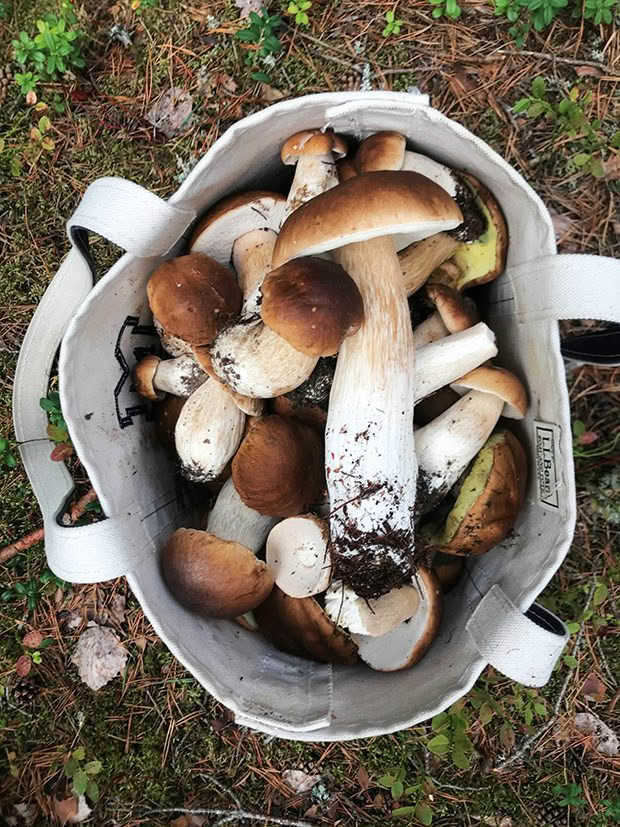
As climate change impacts the supply of certain foods, it’s going to become increasingly important to rely on unlikely alternatives.
Words and photos: Angela Clifford
Imagine having no fresh basil or coriander in your life. Incredibly, this was the reality in 1950s New Zealand.
I recently had an intriguing conversation with my mother who grew up in Christchurch during that era. Much of the produce we’ve grown so accustomed to wasn’t available back then. Broccoli, zucchini, capsicum, and eggplants were unheard of. Unless you were of Italian or Greek heritage, you probably wouldn’t have grown or used much garlic. And there was no bok choy, celeriac, or globe artichokes.
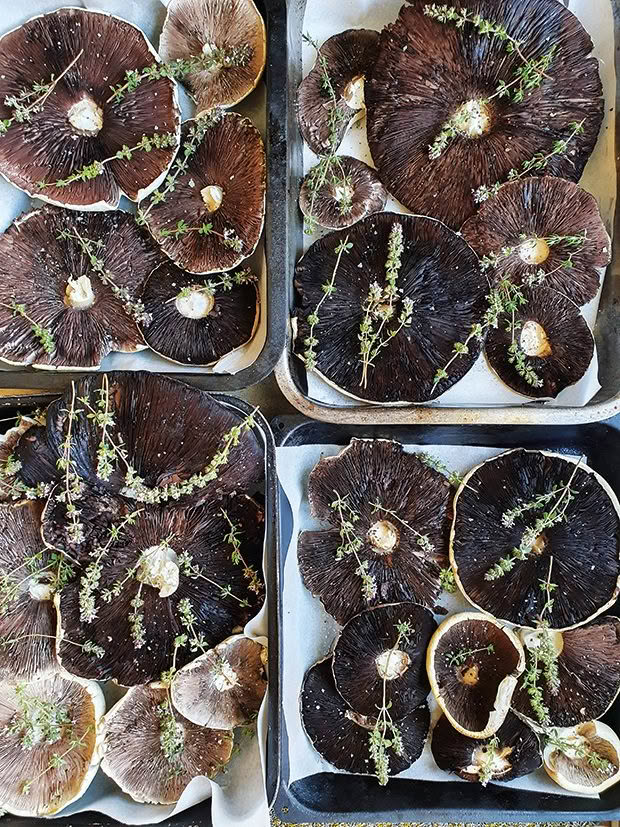
Cultivated mushrooms were off the menu too. There was a train that travelled between Christchurch and Picton taking fresh produce to the Wellington markets. On the way, its crew collected wild field mushrooms from my region – the Waipara Valley in North Canterbury.
In fact, collecting field mushrooms was such a lucrative business in my region that the young locals would protect their patches from out of town foragers.
A previous mayor tells a great story about him as a lad, fooling the “townies” by screwing up paper into balls and leaving them on hillsides and in paddocks. From vantage points, they would then watch the townies’ comical scramble towards the fake fungi.
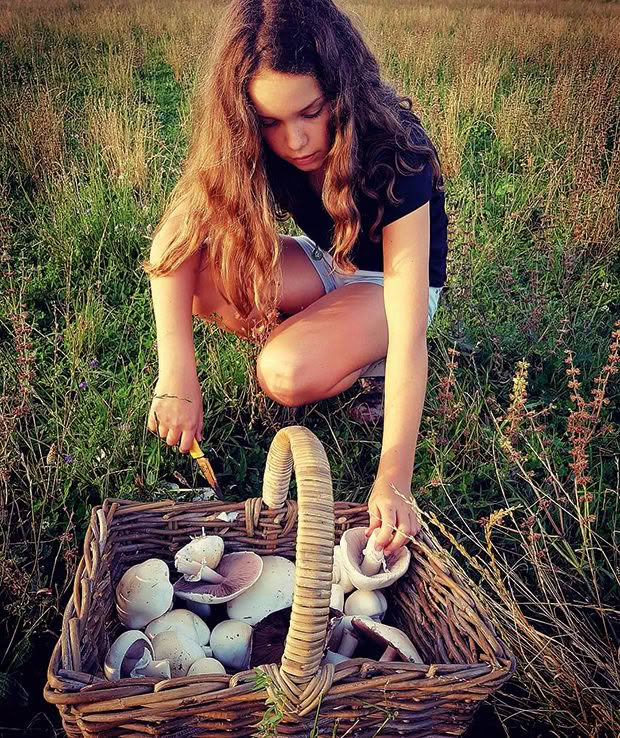
The Waipara Valley still has community mushroom patches to this day – our patch of choice is a local farmer’s paddock. Many years ago, we got permission to slip through the fence and harvest them. But because the farm was recently sold, we’re hoping that the new owner will keep the tradition alive in the spirit of community sufficiency.
April is the best mushroom month of the year in our region. With long, warm autumns and good soil temperatures, any significant rain – as we’ve seen during La Niña – results in a flush of mushrooms. This includes porcini – the most coveted of all our field mushrooms.
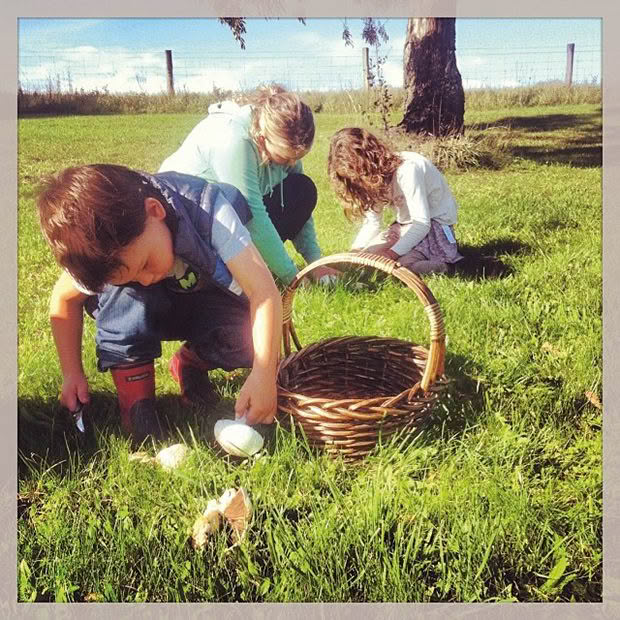
Porcini also features in our local lore.
The story goes that European porcini mushroom spores were imported on the roots of trees by Heaton Rhodes, president of the Canterbury Horticulture Society, while he was establishing Otahuna Lodge. As a result, porcini can now be found at the base of our oldest imported trees throughout the region, including in Hagley Park.
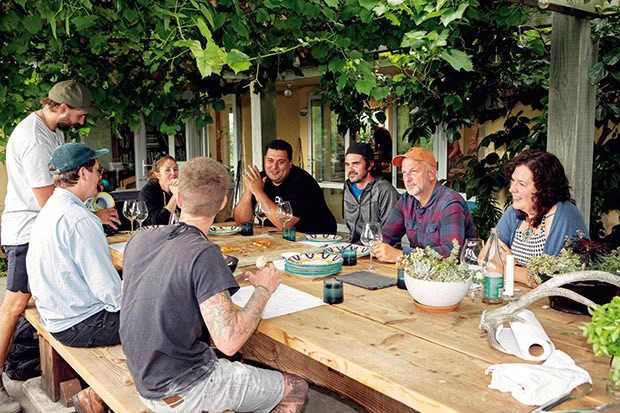
Porcini are delicious umami or savoury flavour bombs that we either bake or dry to use in winter stocks and stews.
The fact that they grow well after heavy rain gives me hope that as other foods become unavailable, others will naturally take their place.
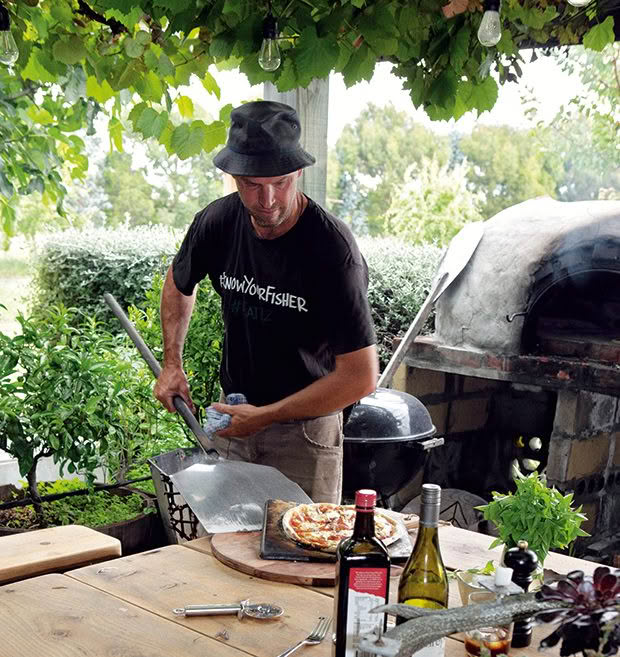
As climate change impacts the viability of imported and domestically-grown foods in New Zealand, it’s going to become increasingly important to adapt our diets and take advantage of what grows well in these changing weather patterns.
This month I’m sharing a couple of what I call our flexible autumn recipes. They use basic, staple ingredients but can be topped with whatever produce you have at hand.
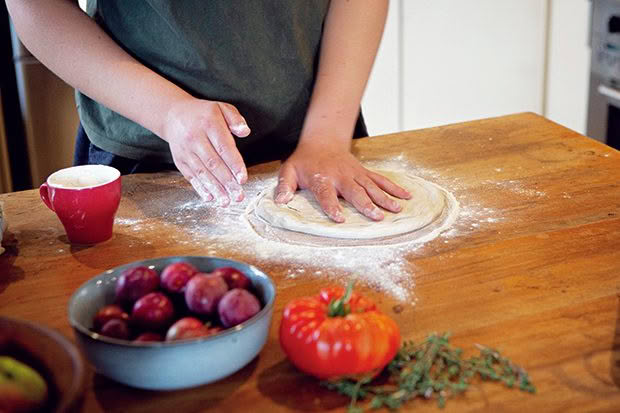
The first is The Food Farm pizza base and at this time of year, we top it with wild mushrooms. We often bake the field mushrooms before we eat them to remove some of the water that can make the pizza base soggy.
My favourite fungi pizza has thyme, salt and plenty of fresh pepper as well as homemade feta or other cheese.
The Food Farm Pizza Base

Makes: 10 medium sized pizzas
Time: 3 hours
INGREDIENTS
800g NZ-grown flour (we use Milmore Downs)
25g salt
25g yeast
550ml water
50ml NZ-produced cooking oil
METHOD
Measure the dry ingredients into the bowl of a stand mixer. Put the mixer on slow using the dough hook attachment. Measure the wet ingredients into a jug and put into mixer while running on low. Mix for 3-5 minutes.
Meanwhile, get a large metal bowl and oil well. When the dough is mixed, use wet hands or a dough scraper to scrape all the dough off the hook, before scraping into the metal bowl. Cover with a plate and put the bowl in a warm place for at least two hours. Form the dough into 10 balls and either store in freezer or use to make pizza bases straight away.
The Food Farm Fruit Tart

Just as wild mushrooms have their moments of abundance and scarcity, so to do many homegrown and wild fruits. Fruit trees often have a biannual cycle, in which a year of plenty is followed by a year of scarcity. Some of our favourite fruit recipes therefore can be used interchangeably with whatever fruit is growing well.
We originally found a version of this recipe in At Home in Provence by Patricia Wells.
Cook time: 1.5 hours
Serves: 8
INGREDIENTS
Crust:
125g unsalted butter, melted and cooled
90g sugar
⅛ tsp vanilla extract
pinch of sea salt
180g NZ-grown flour
2 tbsp finely ground almonds
Cream:
100ml double cream
1 large egg, lightly beaten
¼ tsp almond extract
½ tsp vanilla extract
2 tbsp of honey
1 tbsp NZ-grown flour
Topping:
750g of seasonal fruit. We recommend fresh raspberries, apricots, plums, figs or even poached quinces or pears. If you’re using figs or apricots, halve them first.
METHOD
Preheat the oven to 180°C.
Butter the bottom and sides of a 23cm fluted tart tin with a removable bottom. In a large bowl, combine the butter and sugar, and mix together with a wooden spoon. Add the remaining crust ingredients (except the ground almonds) and stir to form a soft, biscuit-like dough. Try to not let it form a ball. Transfer the dough to the centre of the buttered tin. Using the tips of your fingers press the pastry evenly along the bottom and sides of the tin. The dough will be quite thin.
Sprinkle the ground almonds over the bottom of the crust to prevent it from becoming soggy. Place the tin in the centre of the oven and bake for about 12-15 minutes, until the dough is slightly puffy.
While it bakes, in a medium sized bowl combine the cream, egg, extracts and honey, whisking to blend. Mix in the flour.
When the pastry is slightly puffy, take it out of the oven, but leave the oven on. Starting just inside the edge of the pre-baked pastry, neatly overlap the halved fruit such as apricots or figs, at a slight angle in concentric circles, working towards the centre. Pour in the cream mixture and put the tart back in the oven and bake for about 50-60 minutes, until the filling is firm and the pastry a deep golden brown. Take it out of the oven and place on a rack to cool before removing from the tart pan.
Variation: For berries or poached fruit, make the tart as above but bake fully first without the fruit. After the tart has cooled, add the berries or poached fruit.
Love this story? Subscribe now!
 This article first appeared in NZ Lifestyle Block Magazine.
This article first appeared in NZ Lifestyle Block Magazine.
